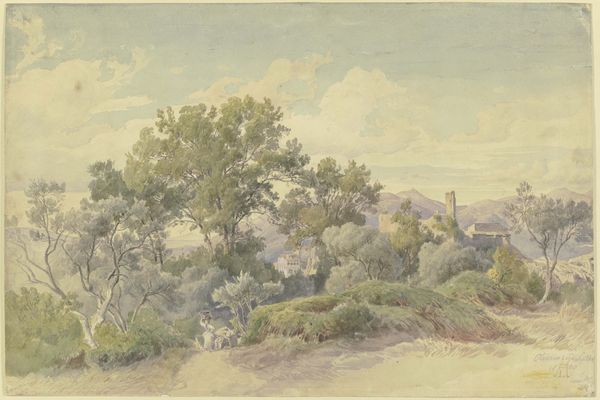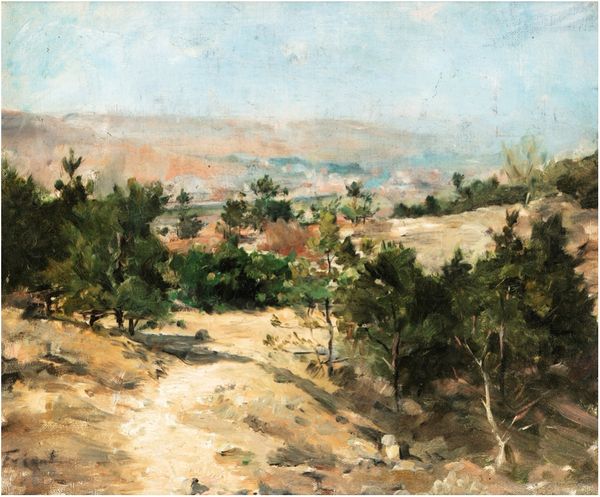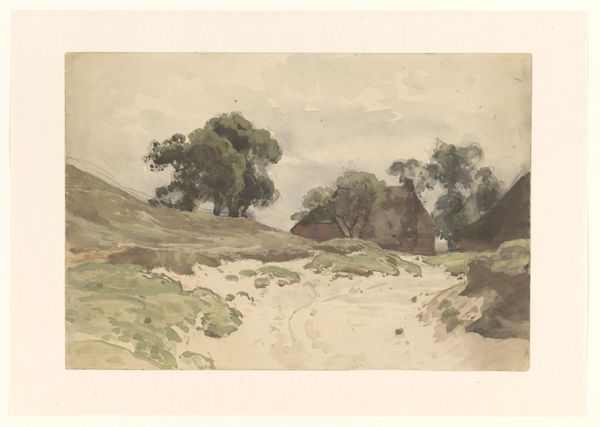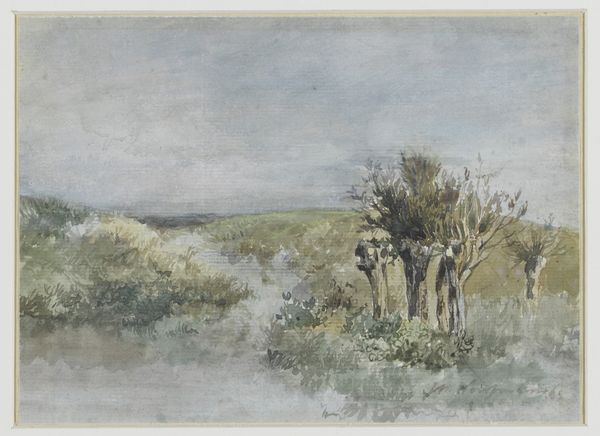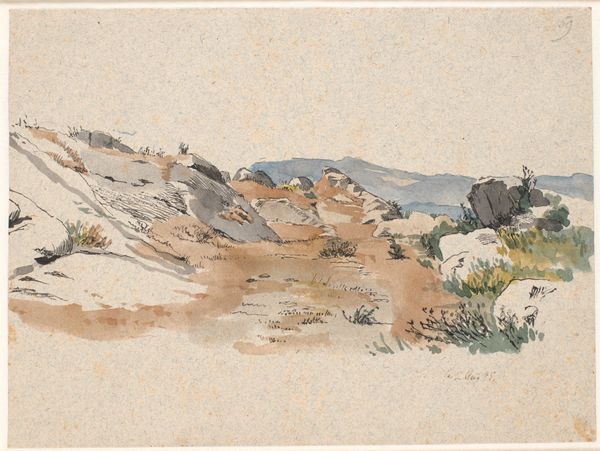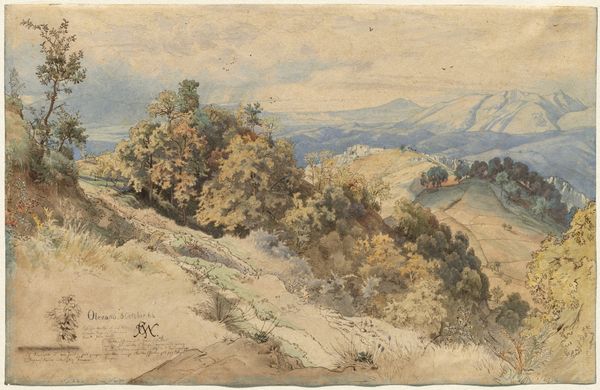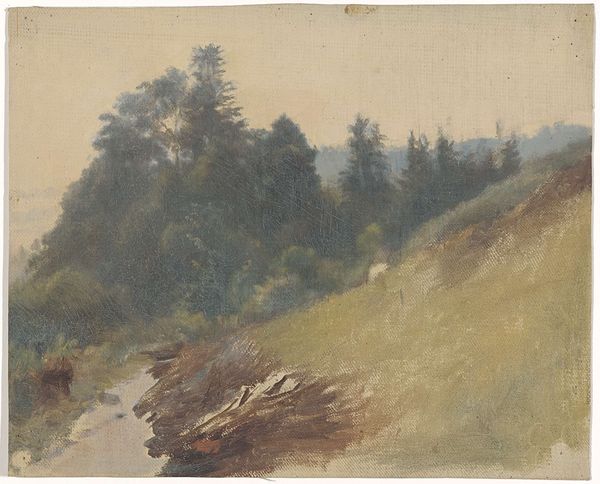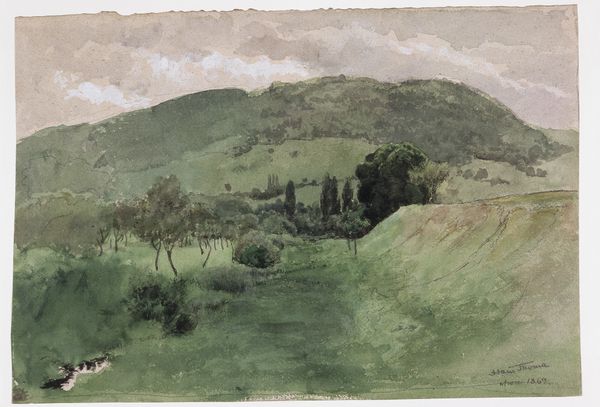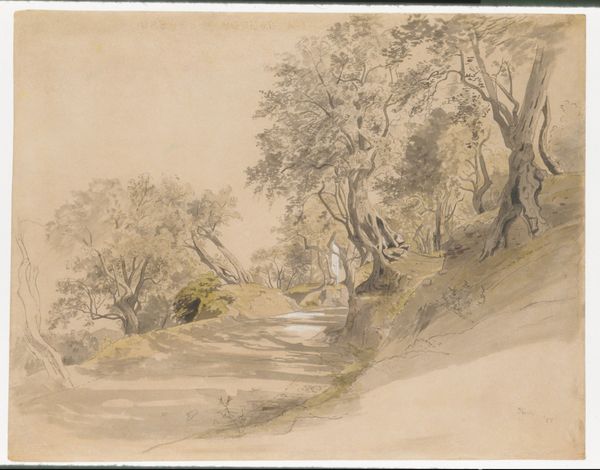
Copyright: Public Domain
Editor: So, this is Adolf Hoeffler's "Scenery near Dornholzhausen," made around 1889 using watercolor and chalk on paper. It's delicate, almost ephemeral. What strikes me is how the earth tones create this quiet, unassuming landscape. What do you make of it? Curator: Well, looking at the chalk and watercolor, I am interested in what Hoeffler *does* with them. The choice of these accessible materials speaks volumes. He is depicting nature not in its grandest form, but through the labor involved in translating a specific, modest locale using commonplace resources. Notice the application—thin washes, minimal layering. This isn’t about illusionism; it’s about the direct relationship between artist, material, and site. Editor: So, you’re seeing the art-making process itself as a central element here? The *doing* more than the depicting? Curator: Precisely. Think about plein-air painting during this period. It becomes an industrial process; transporting materials and setting up allows the land to become a studio, it brings the consumption of images of landscape right to its source. And by using paper, chalk, and watercolor instead of say, oils on canvas, is Hoeffler implicitly making a statement about art’s democratization? Editor: That's interesting. I hadn’t considered the potential social implications of material choice here. So it is the choice of readily accessible material which democratizes the scenery near Dornholzhausen? Curator: Exactly. Hoeffler shows an intentional embrace of simplicity. Through his art, the beauty of the locale and making of that same beauty through drawing becomes democratic to the viewer and creator. What do you think of that interpretation? Editor: It gives me a new way of thinking about landscape. I see how materials are as important to the landscape itself. Curator: Absolutely! By understanding the labour and consumption behind "Scenery near Dornholzhausen", you’ve taken a valuable step into examining art’s meaning-making.
Comments
No comments
Be the first to comment and join the conversation on the ultimate creative platform.
